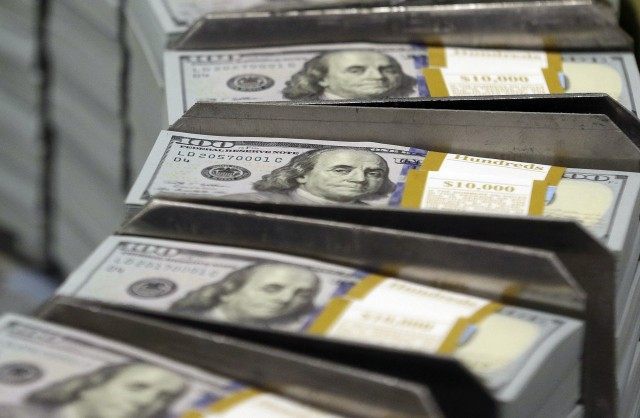International reserves, which measure global savings available for financial market investment, have fallen twice this century: once in the first quarter of 2009, and once in the fourth quarter of 2014. That most recent reserve drop is causing some analysts to warn that conditions for a crash may be building.
Central banks around the world gained a cult-like reputation for infallibility after going all-in to stabilize the financial markets in 2009, following the bankruptcy of Lehman Brothers. But with international reserves falling in the last quarter of 2014 and central bank interventions failing to halt the Greek, China, and Puerto Rico crises, the myth of central bank omnipotence is fading.
Dario Perkins at Lombard Street Research makes the interesting observation: “Grexit isn’t an example of risk, it’s an example of uncertainty.” Responding to “risk” involves calculating the probability of success for different options, picking the optimal response, and then taking action. But as Perkins comments, “the problem markets have with Grexit–nobody really has the foggiest idea what will happen (even those in charge).”
Analysts have focused on whether Greece should stay in the Eurozone or leave. Having calculated the risk of a contagion spreading to some of the other 27 nations, that academic and political elitists that dreamed up the Unite States of Europe have confidence that by using central bank monetary tools (code words for money printing) like they did in 2009, they can manage the risk of a contagious crisis spreading over the continent.
Lombard points out that the people in charge believe “markets have had oodles of time to prepare. Banks have slashed their exposure to Greece over the past six years and most of the debt is now owed to foreign governments.” There “will be a cost for European taxpayers, but the hit can be spread over a number of years.”
The one small detail that seems to have escaped the elitists’ brilliant minds is that “fiat money” (currency not convertible into gold or silver) has no intrinsic value. Lombard’s Leigh Skene compares faith in paper with pretty pictures as bordering on a mass hypnotic trance. “The current groupthink is that central banks can control and/or efficiently manage financial markets and the economy in the best interests of everyone.”
Central bank management historically consisted of mainly of raising and lowering the interest rates and the amount of overnight funding to banks. But since overnight interest rates normally follow the direction of longer term interest rates, which are determined by market forces, central banks are perpetually “behind the curve” of reality.
Since longer-term sovereign bonds are the most marketable, they react quickest to changes in the level of savings and consumer confidence. It is these two market forces that “ultimately determine the overall liquidity in financial markets.”
Falling global reserves in 2014 is an entirely different scenario than 2009. Instead of the central banks needing to act as temporary “lender of last resort” to banks that lent too heavily to speculators in leveraged real estate and stocks, the current decline of international reserves is due to deflationary commodity prices, which force exporting nations to sell foreign exchange reserves to maintain current spending faster than commodity-importing nations are able to pay down debt.
Furthermore, according to Skene, the U.S. Federal Reserve’s balance sheet already “indicates two spikes in foreign central banks’ needs for dollars (and a third may be building) because the dollar’s rise is making it harder for non-Americans to service their dollar debts, further reducing international liquidity.”
Analysts are making “a big to-do” about the balancing out of central bank policies that range from aggressive monetary stimulus in Japan and Europe to tightening in the U.S. However, asset class price movements are still highly correlated.
The announcement of European Central Bank’s quantitative easing program sent rates to “insanely low levels.” But the bond bubble burst has cost investors about $1.3 trillion since February, and raised interest rates across the globe.
Lack of market liquidity has been considered a major “risk” factor in the run-up to big bond and stock market crashes in the past. When the Great Financial Crisis hit in 2008, commodity exporting countries’ continuing generation of excess cash meant they had to continue to buy international bonds and stocks, eventually bailing out the crashing markets.
But deflating commodity prices today are forcing exporters to sell stock and bond investments to balance their budgets. And evaporating market liquidity has added uncertainty to what could happen to markets in a new financial crash.

COMMENTS
Please let us know if you're having issues with commenting.